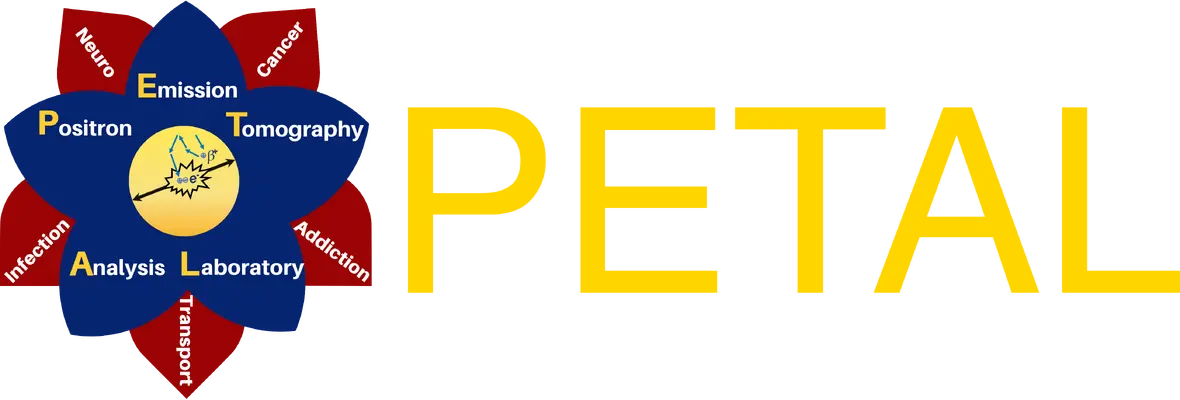Positron Emission Tomography Analysis Laboratory (PETAL) Introduction
Positron Emission Tomography Analysis Laboratory (PETAL) in the Department of Radiology in the Perelman School of Medicine at the University of Pennsylvania is led by Research Assistant Professor of Radiology Robert Doot, PhD. PETAL provides sophisticated quantitative analyses of images from PET/CT, and Magnetic Resonance Image (MRI) scanners to quantitate regional PET radiotracer uptake, biodistribution, and dosimetry. Applications range from whole body imaging of cancer and infection to neuroimaging of addiction and neurodegeneration. Analyses of blood samples from imaging sessions include plasma and whole blood counting to determine radiotracer concentrations and High Performance Liquid Chromatography (HPLC), thin layer chromatography (TLC), and solid phase extraction (SPE) to determine radiotracer parent and metabolite concentrations as functions of time. The mission of PETAL is to quantitate both human and preclinical uptake of radiotracers via static and kinetic analyses including partial volume corrections and extraction of arterial input functions from PET images. Quantitation techniques can be applied either to every image voxel or to volumes of interest defined by user criteria, including automatically defined brain regions via atlas normalization or parcellation of T1-weighted MRIs. Image analyses employ a combination of Pmod, MIM, and OLINDA/EXM commercial software, FreeSurfer, FSL, and Statistical Parametric Mapping (SPM) open source software, MRICloud and Integrative Data Analysis Environment (IDAE) neuroimaging software from Johns Hopkins University and internally developed software depending on the application.


